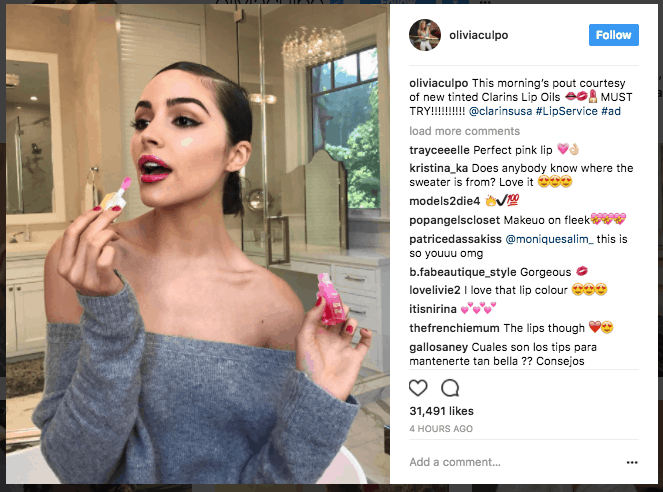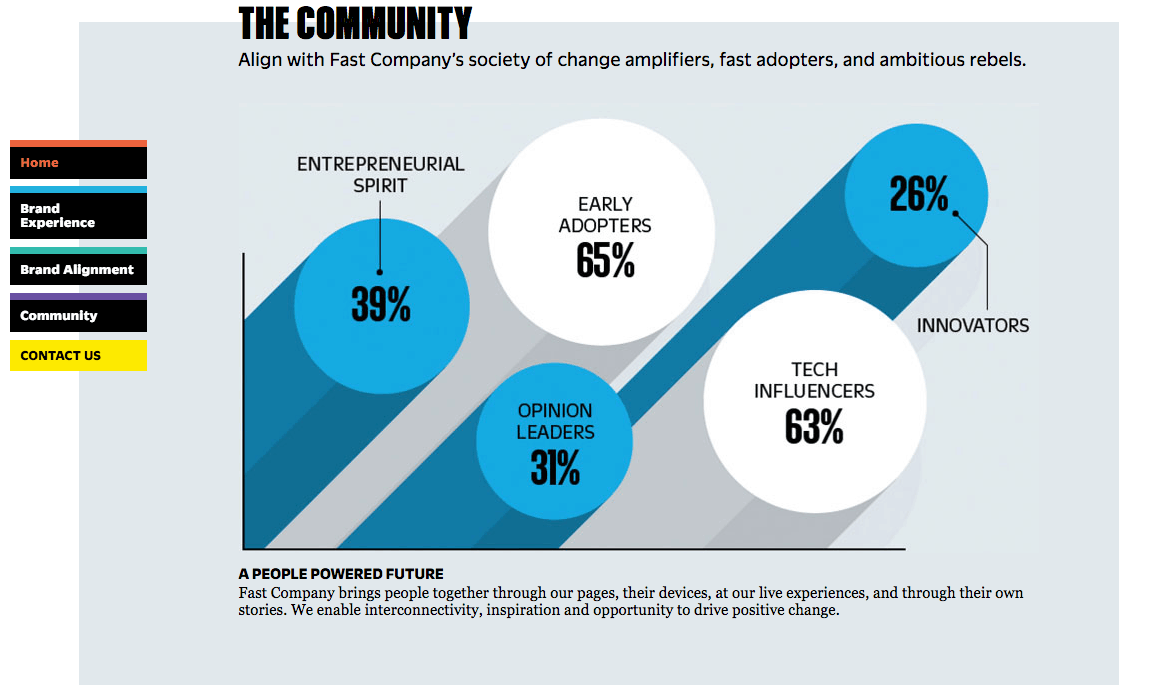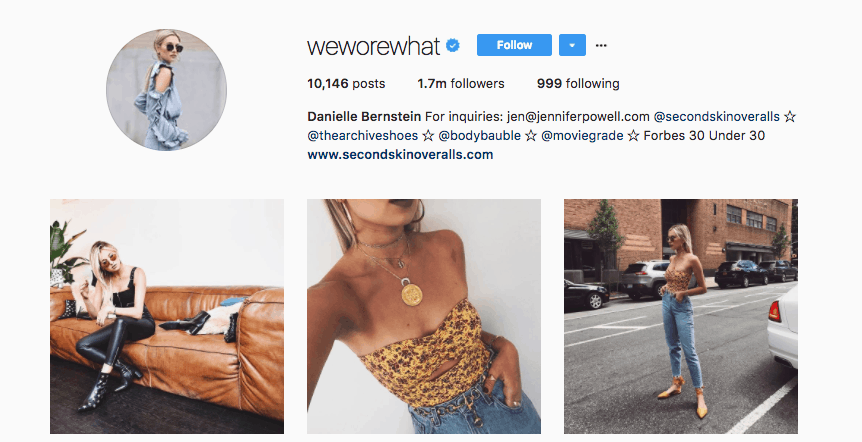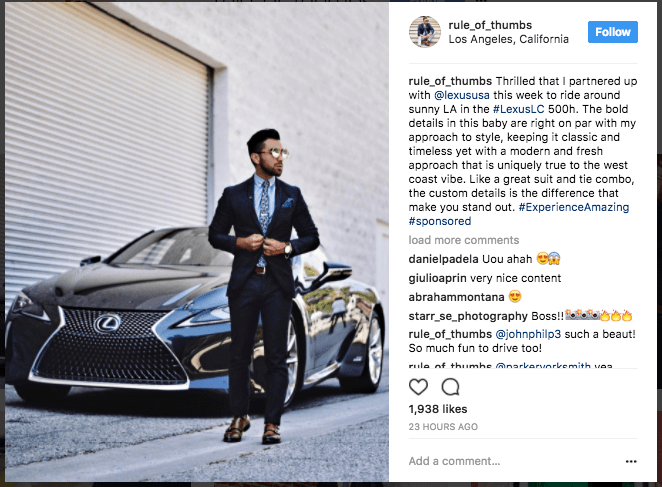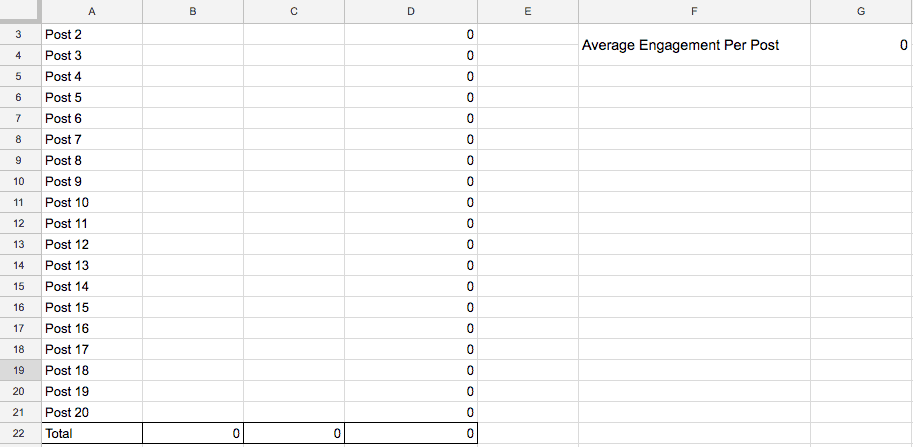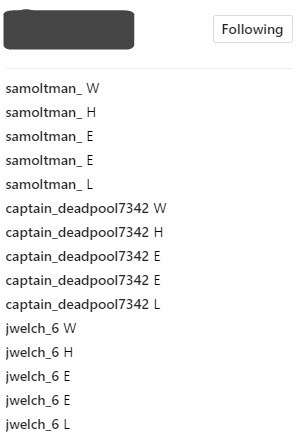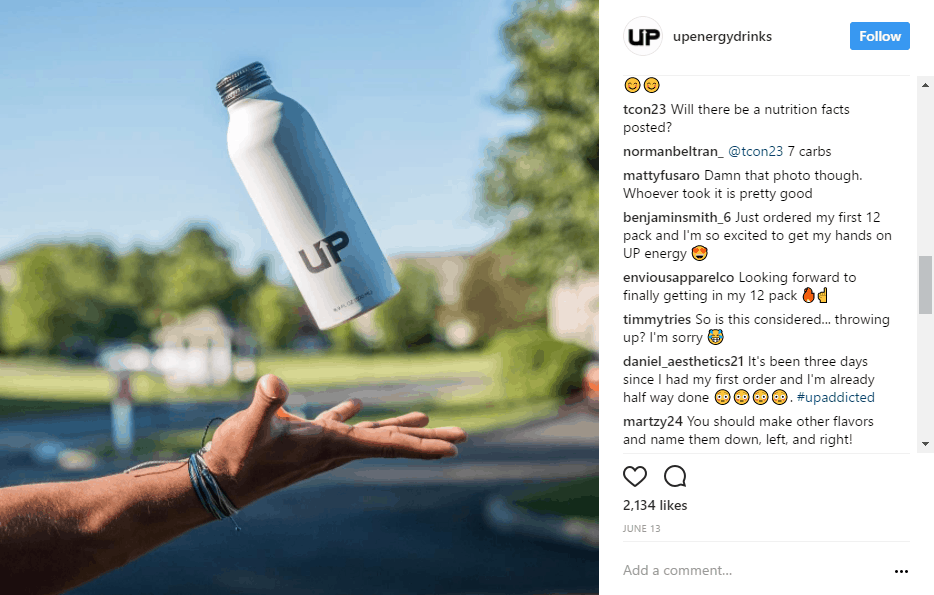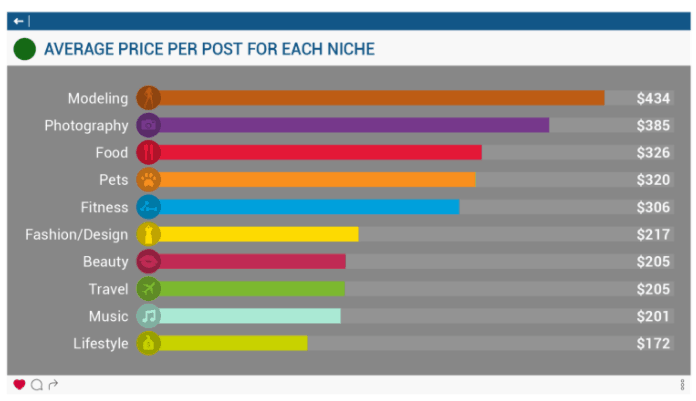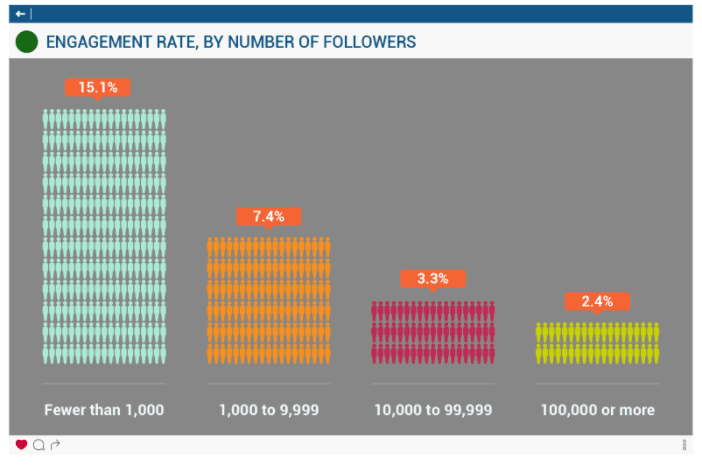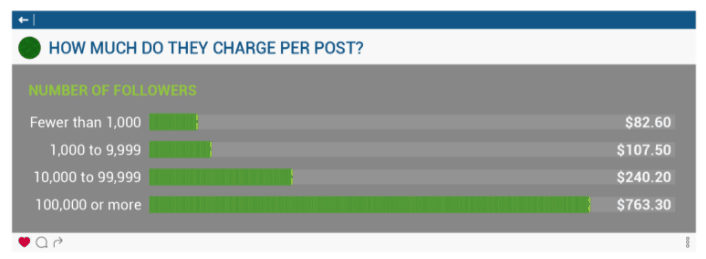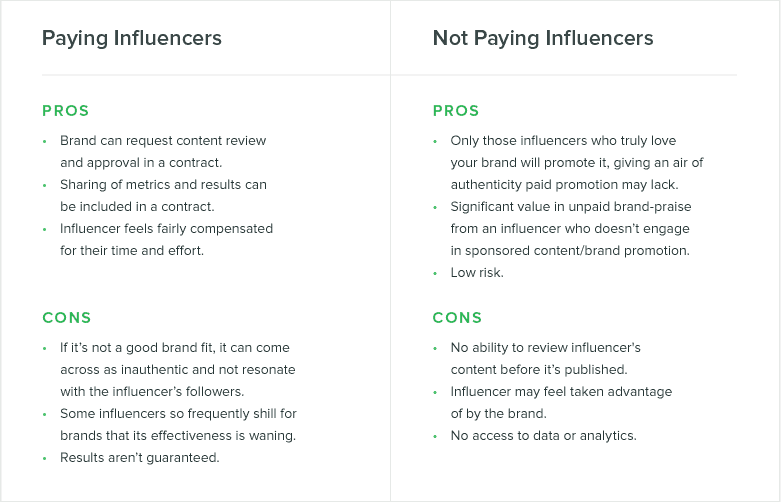As a startup, you have to be smart about how you spend your marketing dollars. Should you invest in banner ads? Facebook ads? Content marketing? The thing is, there really is no right or wrong answer because everything technically works.
It’s more about figuring out what your startup can afford, which channels will give you the most bang for your buck, and where your strengths are. There is, however, one tactic that can work for virtually any brand, regardless of your budget or skillset: Instagram influencer marketing.
There’s a good chance you’ve been hearing a lot about this lately, and for very good reasons that I’ll get into below. But it can be tricky to get it right if you’re just starting out.
If you’ve considered getting into Instagram influencer marketing, but need help with details like figuring out how to find them, how much to pay, and how to make it work even if you have little or zero marketing budget, this is the post for you. I’ll walk you through exactly how to get involved with Instagram influencer marketing, step by step.
Why Instagram Influencer Marketing?
Let’s set the scene. You receive a flyer in the mail for a new restaurant that just opened up in town. A week later, three different friends tell you about how delicious the food was and urge you to go check it out.
In that scenario, which has a bigger influence on whether you try out the restaurant? The flyer that came directly from the company, or the recommendations from friends? If you’re like most people, it’s the latter by a good margin.
A Nielsen survey found that only 33% of consumers trust brand advertisements, whereas 90% trust peer recommendations.
But it’s not just friends and family where customers put their trust. A survey from Twitter found 49% of users rely on social media influencers for recommendations.
Here’s another powerful statistic that explains why customers prefer influencers over brands: 96% of people believe the advertising industry doesn’t act with integrity.
And then there’s perhaps the most appealing reason of all to use influencer marketing—return on investment. Influencer marketing content drives 11 times higher ROI than traditional digital marketing channels.
With data like that, it makes more sense than ever for startups to add influencers into their marketing strategies. The current network of choice for influencer marketing is Instagram, where it’s grown rapidly to become a $1 billion industry.
In addition to these data points, Instagram influencer marketing should be a priority for every startup, for a few more reasons:
- There’s a ton of influencers to work with right now.
- It’s not just for the “big guys.” Plenty of influencers are willing to work with brands of any size, as long as they like your product and see a connection between your brand and their audience.
- Influencers have the potential for exponential reach, which provides quicker growth for a fraction of the price you’d pay on other channels.
- Influencer marketing is still fairly underpriced. Once more brands flock to influencers, expect the costs to rise.
Just like any other marketing channel, influencer marketing isn’t guaranteed to work for every brand. Just because your startup is new, exciting, and fun doesn’t mean you’ll be able to attract influencers or put together a successful campaign. But there’s at least potential for just any type of startup, and I highly recommend checking into it.
Here’s how to use influencer marketing on Instagram to fuel your startup’s growth:
Step 1: Creating Your Instagram Influencer Marketing Strategy
You probably read all of the stats above and thought, “That sounds great, can’t wait to start!” But before you dive in, you need to put together a strategy. To maximize your chances of success, sort out the following first.
Decide What Do You Want to Accomplish
Before you approach an influencer, you’ll need an idea of what you want them to help you do. Do you want to build awareness for your brand? Sell more stuff? Be a part of the rollout for your startup’s launch?
Without a clear goal in mind, it’s difficult to know if your efforts are successful or not. Detailing what you want to accomplish will also help the influencer create the right type of content to get you there. An Instagram post meant to generate interest in your brand doesn’t necessarily look the same as one meant to sell more of your products.
Choose Between a Long-Term Campaign or One-Off Promotion
There are a few different ways you can work with influencers. You might do a one-off promotion that only lasts for a short period of time. This is pretty common for product launches, events, or just general Instagram Ads. Here’s an example of a one-off sponsored post Cath Kidston did with Instagram influencer Kate La Vie, who boasts more than 200,000 followers:
Alternately, some brands prefer to partner with influencers on an ongoing basis. You see this a lot with ambassador programs. The influencer will agree to some sort of long-term deal with a brand, and create a series of content over a period of several months.
Here’s an example from actress Olivia Culpo, who partnered up with skincare line Clarins to do a series of sponsored posts.
If you go the long-term partnership route, get the influencer to commit to a set number of posts per week or month. That way you’re likelier to get more value out of the deal.
Want More Instagram Followers? Sign Up For Our Free Masterclass.
Learn How to Go From 0-500K+ Followers in 12 Months! Join our FREE Instagram Masterclass!
Do Some Prep Work
The easier it is for influencers to understand what your brand is about, and what makes your products or services unique, the easier it will be to capture it all in the content they produce for you.
One simple way to do this is, during your strategic planning, create a one-sheeter that gives an overview of your brand.
This is almost like a mini media kit. It should be succinct but clear. You don’t want to scare influencers away by giving them a 50-page document to read on the history of your company. Fast Company got creative and created a particularly strong page on its website, complete with all the information anyone would need to learn what their brand is all about.
This article and template from TrackMaven should also help you create a useful document to give influencers.
Once you have all that ready to go, it’s time to start researching influencers to work with.
Step 2: How to Find the Right Influencers for Your Brand
Not just any influencer will be the right match for you. You want someone who has the attention of your target audience, and who you feel would be a good representative for your brand.
Steer clear of the temptation to go for sheer volume. Kylie Jenner may have millions of followers, but are they in your target audience? Influencer marketing isn’t about reaching as many people as possible. It’s about reaching the right people.
Let’s Redefine What an Influencer Is
There’s a huge misconception that influencers are just people with hundreds of thousands of followers. Follower count is not actually a measure of someone’s influence.
An influencer is a person who has the ability to convince their followers to take action. It doesn’t matter if they have 500 followers or 100,000. If a person with 500 followers can get half of those people to follow you just by mentioning your product, they have influence.
Skip the ‘Big Fish’ & Tap Into Micro-Influencers
That brings us to the next point. As a startup, spending thousands of dollars on a single Instagram post by an influencer is pretty risky. An established brand with a huge marketing budget can afford to take a gamble like that, but startups in the infancy or growth stage don’t always have that luxury.
What if instead of spending your entire Instagram influencer marketing budget on one or two posts from a couple huge influencers, you spread it across multiple posts from several “micro-influencers”?
A micro-influencer is someone with a smaller, targeted, and active following. Micro-influencers are perfect for startups because they’re affordable, their audiences are typically engaged around a common theme or industry, and they can still produce impressive results. In fact, micro-influencers were a big part of what helped Gretta Rose van Riel build a multimillion-dollar ecommerce business.
Big influencers with large followings are in high demand, and their pricing reflects that. For instance, if you want to get in front of blogger Danielle Bernstein’s 1.7 million followers, expect to pay between $5,000-$15,000 for a single sponsored post.
On the flipside, micro-influencers don’t have a long line of people knocking on their doors to promote their products, usually because:
- Marketers have to do more work to find them.
- Micro-influencers sometimes don’t even realize they’re influencers until a company reaches out and asks to work with them.
Here are some advantages of working with micro-influencers instead of relying on one or two big influencers:
- Lower risk: As powerful as Instagram influencer marketing can be, there’s a level of risk involved. The influencer’s post might not resonate, or their audience just might not connect with your brand. You can lower the risk by spreading your budget across multiple influencers.
- More content: Instead of getting a single post from one influencer, you can purchase multiple pieces of content from various people. That gives you the opportunity to repurpose the content on your brand’s channels or use the influencer content in testimonials or other marketing materials.
- Budget friendly: They tend to be underpriced, since they have less experience working with brands.
- Bigger impact: Since micro-influencers don’t tend to promote a ton of stuff, each promotional post looks more genuine and is therefore more impactful. When an influencer’s Instagram page is filled with posts promoting detox tea, waist trainers, and everything else under the sun, they can easily lose the trust of their audience.
- Better service: As novices, they’re often willing to put more work into your promotions because they want to prove their value.
But here’s one of the biggest benefits of working with micro-influencers:
When fidget spinners started buzzing, you probably saw one or two people posting about them. But eventually, you couldn’t open Facebook or Instagram without seeing a video or photo of those little spinners. That was probably the point when you finally decided to see what all the fuss was about and buy one.
You can create the same effect for your brand with micro-influencers. By partnering with several micro-influencers who have some overlapping followers, your brand’s message gains traction through repetition. In short, you look more popular and authoritative than if just a single person posts about you.
In order to pull this off, you need to prep well in advance and time out your campaigns to get all your influencers to post around the same time.
In order to promote their new line of luxury cars, Lexus partnered with top Instagram influencers to spread the word, including lifestyle influencer J Fig.
The #1 Metric to Look at When Choosing Influencers (Hint: It’s Not Followers)
As I mentioned earlier, follower count is not a complete representation of how influential an Instagram user is. You should be more concerned with the quality of their followers than the quantity.
The best way to get an idea of the quality of an account’s followers is to look at their engagement rate. You can either track engagement rate as a percentage of total followers or the average engagement per post.
To give you a baseline, the average engagement rate for Instagram users is 2-4% depending on which survey you look at.
If you want to see the engagement rate as a percentage of their followers, you’d take their total number of engagements (likes and comments) and divide that by their total number of followers. You’ll need to use a third-party tool like Iconosquare, Tapinfluence or the company I work for, Sprout Social.
Otherwise, you would need to go through each post and add up all the comments and likes. This can be a time-consuming process and not practical for most brands. Tools can calculate these engagement rates fairly easily.
If you decide to manually calculate engagement per post, make a spreadsheet. In the first column, add the links to their last 20-50 posts. In the second column, put the number of likes for each post, and the number of comments in the third column. Total up both columns, then divide by the number of posts you looked at to get the engagement rate.
For example, if you looked at 30 posts, and the total number of engagements was 500, the equation would be 500/30. That means they’re getting an average of about 16 engagements per post.
This is more time consuming, but it’s free to do if you’ve got an afternoon to kill. Here’s an example spreadsheet to use as a template.
Something to keep in mind is that just like followers, engagement can also be purchased and automated. But it’s usually easy to spot. If an account’s posts have hundreds or thousands of likes and only a few comments, be suspicious. Also, if a post has hundreds of comments but they’re all generic “this is cool” or complete gibberish, your alarm should go off.
What you’re looking for is real, genuine engagement. Comments that look like this:
That type of engagement can’t be faked. Or at least, it’d be extremely time consuming and difficult to pull off on a consistent basis.
Now that you know what you’re looking for, the next question is how do you find these influencers?
Want More Instagram Followers? Sign Up For Our Free Masterclass.
Learn How to Go From 0-500K+ Followers in 12 Months! Join our FREE Instagram Masterclass!
Step 3: Where Do You Find Influencers?
There are plenty of ways to find Instagram influencers. You can either search directly in Instagram, or use one of the many tools available.
If Instagram influencer marketing is going to be a big part of your startup’s marketing strategy, it might be worth investing in a tool to help you source and manage your campaigns. But it’s not a necessity. Since the process looks different depending on what tool you use, I’ll walk you through how to find influencers using just the Instagram app.
The easiest thing to do is search for hashtags related to your industry. For instance, if you’re a food delivery company, you could look for hashtags like #foodie or #instafoodie. To find more hashtags, search using one hashtag and then review the posts in the search results to find some new ones.
Instagram will show you the posts with the most engagement at the top of your search results. These are typically from popular accounts.
Tap one of the photos that catches your eye. Then look through the account’s profile. Note the type of content they post, how often they post, and if they fit your brand’s style. Don’t just skim through for 15 seconds. You’re getting ready to potentially give this person hundreds or thousands of dollars, so you need to know if it’s a wise investment.
Also keep in mind all the things I mentioned like engagement rate and the quality of their followers. Really do a deep dive to learn as much about them as you can.
If you think they’re a good fit, you can go to the next step, which is to reach out to them.
Step 4: How to Pitch Influencers & Actually Get a Response
Don’t make the mistake of assuming influencers will automatically work with you just because you’re paying them. The best influencers are a little picky about who they work with, which is great for your brand. It means they only promote products they truly believe in and their audiences will care about, and will only partner with brands they feel positive about.
In order to improve your chances of getting quality influencers on board, make a good first impression. DMing someone “Hey, we’ll give you $100 to promote our magic pill” isn’t a good first interaction.
Your pitch should be a process, and not something you can do in a single DM. Once you’ve found the influencer(s) you want to work with, either email or DM them with a brief introduction. This doesn’t have to be anything super in-depth. You could do something as simple as this:
“Hi John! Dom from ABC Company here. We’re huge fans of the motivational and inspirational content you post. It’s very aligned with our brand and the message we’re striving to put out. We’d love to work with you. If you’re interested, let us know and we can set up a call!”
This initial contact is simply to gauge interest and get on their radar. Keep it brief, personalized, and sincere. Notice how I mentioned that my company is a fan of their work and reference the type of content they share. This shows that we specifically chose them, and this isn’t just spam.
Don’t get into specifics about payment, campaigns or any other details here. You’re just courting them at this point.
The way you follow up will depend on their response. If they decline, thank them and let them know they can reach out to you any time. You don’t want to burn bridges and ruin any chances of working with them in the future.
If they say they’re interested, you can either set up a phone call or email them additional details.
Step 5: Deciding How Much to Pay
This can be a tricky process, and the answer isn’t always straightforward. You don’t want to overpay, but at the same time you don’t want to make an insultingly low offer. Unfortunately, there is no one-size-fits-all solution. It depends on what your company can afford and the value you think you’ll get from the influencer.
The team at Influence.co studied over 500 accounts to determine how much the average Instagram influencer charges. They found the average cost for a sponsored Instagram post was $271.
Here’s a look at the breakdown by niche/industry.
At the risk of sounding like a broken record, their research also showed that follower count shouldn’t be your primary metric for picking influencers. One of the things they looked at was the engagement rates of influencers based on follower count.
Your eyes aren’t deceiving you. The influencers with smaller audience sizes have better engagement rates.
That doesn’t mean you should completely ignore influencers with large followings though. It’s still smart to understand that 2% engagement on a page with 100,000 followers is 2,000 people.
But when you look at the average cost charged by influencers with 100,000 or more followers, compared to those with smaller audiences, things start to tip back in the direction of micro-influencers.
Keep in mind these numbers are based on a single study. You may talk to influencers with 5,000 followers who want $400 per post, or people with 20,000 followers who charge $100 per post. But these numbers will at least give you a starting point for negotiations rather than going in completely blind.
In addition to all of this data, you also need to try to calculate your potential return. Some influencers have stats on how well their campaigns have converted in the past. Use that data combined with the cost of whatever you’re promoting to get a ballpark of what a fair price will be.
On the other hand, the influencers who have this level of detail on their campaigns usually don’t charge $100 per post. They’re experienced players who frequently work with brands, and their pricing will reflect that.
Settling on a price for influencers is both an art and a science. You have to know how to negotiate, and also look at any available data such as engagement rate or conversions. The magic is in finding that sweet spot.
What to Do If You Can’t Afford to Pay Influencers With Cash
Say you want to get started with Instagram influencer marketing but don’t have a budget for it. Even micro-influencers are going to charge you at least a few hundred dollars. Does that mean influencers are off limits for you? This is a common predicament for startups.
While money is the top currency for influencers, a popular alternative is to offer free products in exchange for a mention. Keep in mind that there are a ton of startups using this exact same tactic so it’s a bit saturated. But that doesn’t mean it’s impossible.
If your startup already has a presence, another option is to offer influencers an exclusive first look at upcoming products or other cool incentives that don’t require payment.
Lastly, you could start an affiliate program exclusively for your influencers. With an affiliate program, you only pay influencers based on the sales they bring in, instead of a flat fee per campaign.
If you’re debating whether or not to pay influencers, here’s a chart that breaks down the pros and cons of each:
Source: SproutSocial
Step 6: Publishing Content
Once you’ve signed on an influencer, the next step is to start implementing your strategy and getting them to publish content. This is the step that will determine whether your strategy is a success or a flop. Here are some tips to make your strategy a winner:
Use a Branded Hashtag
In order to brand your campaign, create a hashtag to go along with it. Have all your influencers use this hashtag in their Instagram captions when promoting your company or products.
Fashion brand Daniel Wellington has influencers use #danielwellington when posting pictures of their watches, so people can easily identify the brand behind the products.
Give Influencers Creative Control
You may know your products and brand, but influencers know their audience. It’s the reason people follow them and are willing to try the products and services they recommend. The last thing you want to do is overstep your boundaries and try to shape the content they create.
If you want their post to feel authentic and less like a blatant ad, give influencers the ability to come up with their own concepts and ideas. Just require any content to be approved before it’s published.
Don’t Get Lazy
Influencers may be in charge of publishing content, but that doesn’t mean you’re completely off the hook. You still need to promote the campaign on your end and monitor the results.
Stay Compliant
One mistake brands and influencers sometimes make with sponsored posts is failing to mention that it’s an ad. The FTC has stringent policies for social media endorsements. In fact, they recently published a press release to inform influencers and the brands they work with about proper disclosure.
Luckily, it’s not terribly difficult to keep posts compliant. A common move is to include hashtags like #ad or #sponsored in the caption, like in this post promoting SugarBearHair.
Step 7: Tracking Your Efforts
How do you know if the content from your influencers is paying off? You need to measure and track your campaigns. This will look different depending on your goals. For instance, if you’re trying to sell more products, you’ll have to set up link tracking for your influencers. That’s beyond the scope of this guide, but here’s a post about UTM tracking that explains exactly how to get set up.
If your goals are related to brand awareness, you’ll have to use an Instagram analytics tool to track how often your branded hashtags are used, along with other helpful metrics.
Step 8: Building Relationships Instead of Transactions
This is something that doesn’t get spoken about enough. Some brands treat Instagram influencer marketing as a transactional process. Once the campaign is over, they don’t engage or interact with the influencers at all until they need them again.
As a startup, building relationships with influencers will be crucial for building your reputation and reaching more people. Look for ways to build relationships with the influencers you work with, beyond the campaigns you build. Engage with their posts, even if they aren’t promoting your company. Regram their photos. Give them shoutouts. Do anything you can to stay on their radar.
Want More Instagram Followers? Sign Up For Our Free Masterclass.
Learn How to Go From 0-500K+ Followers in 12 Months! Join our FREE Instagram Masterclass!
Ready To Find Those Instagram Influencers?
Instagram influencer marketing can be very powerful for startups, but it’s not as simple as it might look. Be strategic, get selective about who you work with, and make sure you’re tracking your efforts. Every campaign might not be a hit, but as brands like Gymshark, MeUndies, and many others have shown, influencers can be the fuel your startup needs to grow.
Have you had success working with Instagram influencers? What were the keys to making it work, or what caused it to fail? Drop a comment below and let us know!


